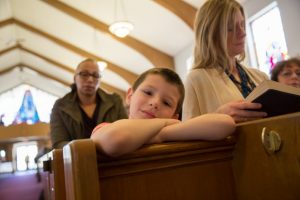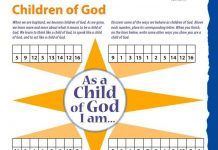
Woodeene Koenig-Bricker
As we begin a new year, be aware that our students will come with varying degrees of understanding Scripture. Some will be very familiar with Bible stories, others may not even know what the Bible is. We can’t effectively teach the lessons contained in the Bible until we are sure that our students understand the big picture of Scripture.
Key Points
An introductory lesson should contain the following three points:
- Although we talk about the Bible as if it were a single book, it’s much more like a computer with various programs or an iPad or tablet with different kinds of applications.
- Many different people, while inspired by God, wrote the Bible over thousands of years. No one person wrote the Bible.
- Catholics read the Bible at every Mass. Scripture is an essential part of Catholic worship.
More Than a Single Book
To help students understand the composition of the Bible, discuss how a computer or an iPad is a single object, but it can contain many different “things” such as music, games, reading material, email, and much more. In somewhat the same way, the Bible is a single volume, but it contains many different kinds of material, including songs (Psalms), history (Acts), rules (Deuteronomy), letters (the Epistles), lectures (the Prophets), stories (Genesis), and more. We need to understand the meaning and purpose behind each of the parts of the Bible in order to understand their messages.
Multiple Authors
We know the authors of many of the books of the Bible, but others are lost to history. Show your students that the names of the books are often the names of the authors, such as Isaiah, Jeremiah, Luke, or Micah. Point out that other books are named for what they contain, such as Genesis, which means the beginning, and still other books, such as the Epistles, are letters named after the people who read them. Sometimes we know those authors; for instance, Paul and his epistles. Others, we have no idea, like the writer of Genesis.
Help your students understand that although God inspired all the writers, the different styles are the result of the Bible being written by so many different people over thousands of years.
The Mass and the Bible
 Many students (and probably some of their parents) don’t make the connection between the readings at Mass and the Bible. Explain to your class that each Sunday, we hear part of the Old Testament, part of the New Testament outside the gospels, and part of the gospels. By providing an overview of the Bible as you begin the teaching year, you can more effectively use Scripture in your lessons over the next few months. The more we know Scripture, the more we know the heart and mind of God.
Many students (and probably some of their parents) don’t make the connection between the readings at Mass and the Bible. Explain to your class that each Sunday, we hear part of the Old Testament, part of the New Testament outside the gospels, and part of the gospels. By providing an overview of the Bible as you begin the teaching year, you can more effectively use Scripture in your lessons over the next few months. The more we know Scripture, the more we know the heart and mind of God.
Woodeene Koenig-Bricker is the author of numerous books, including 365 Saints and 365 Mary, and is the senior editor of a woman’s Bible. She has helped to develop curriculum for both youth and adult faith formation programs and has taught RCIA in her parish.
This article was originally published in RTJ’s creative catechist September 2013.
Photo: aldomurillo, istock




